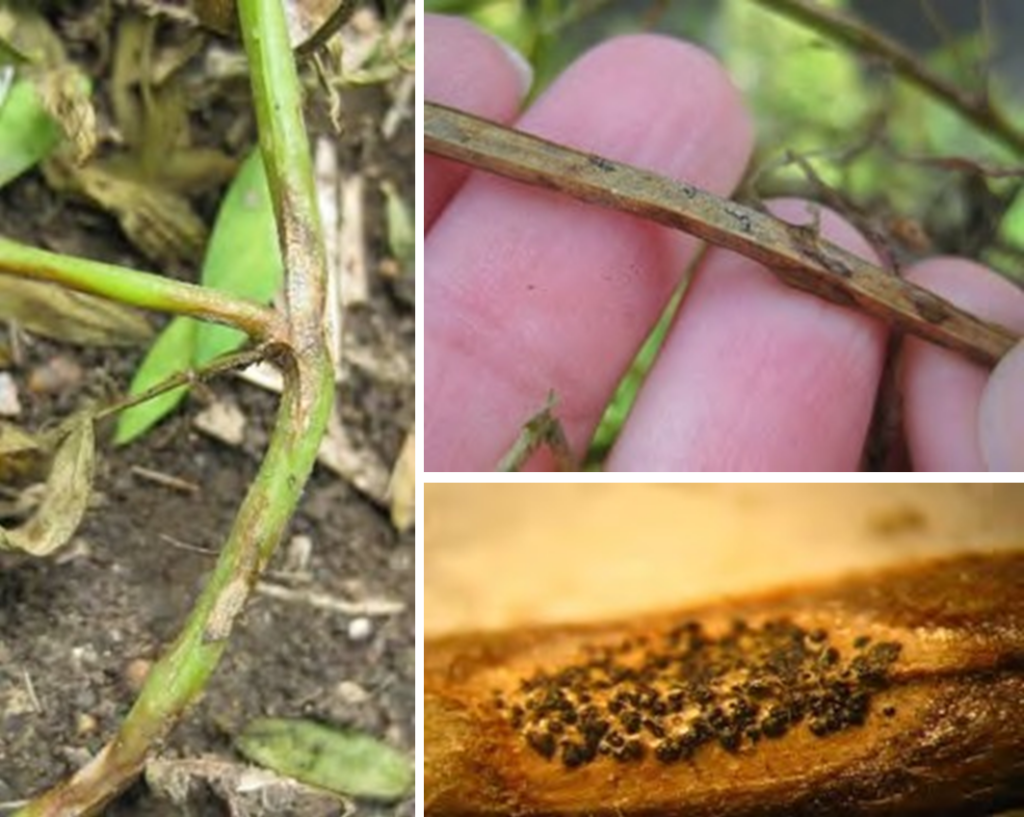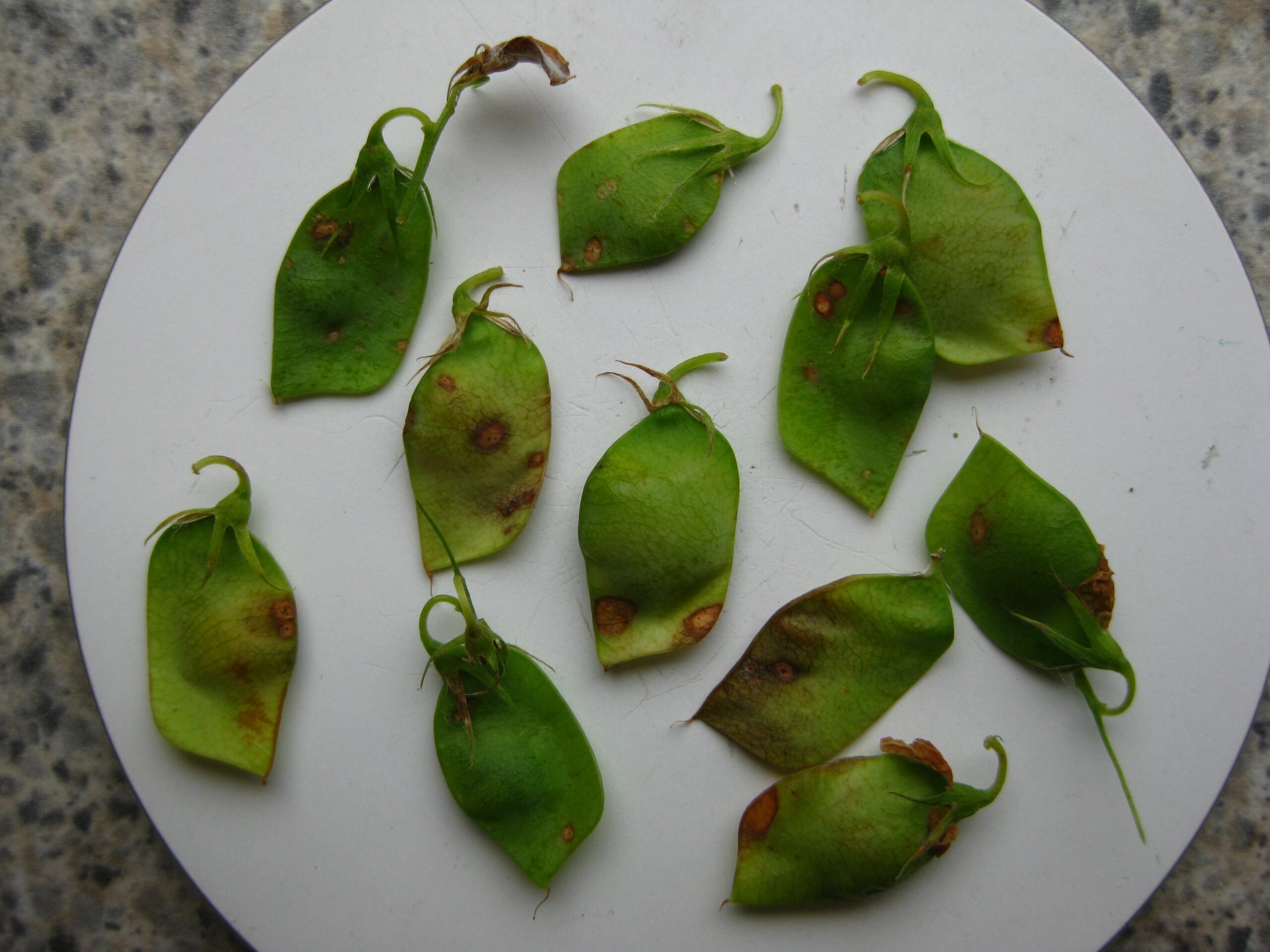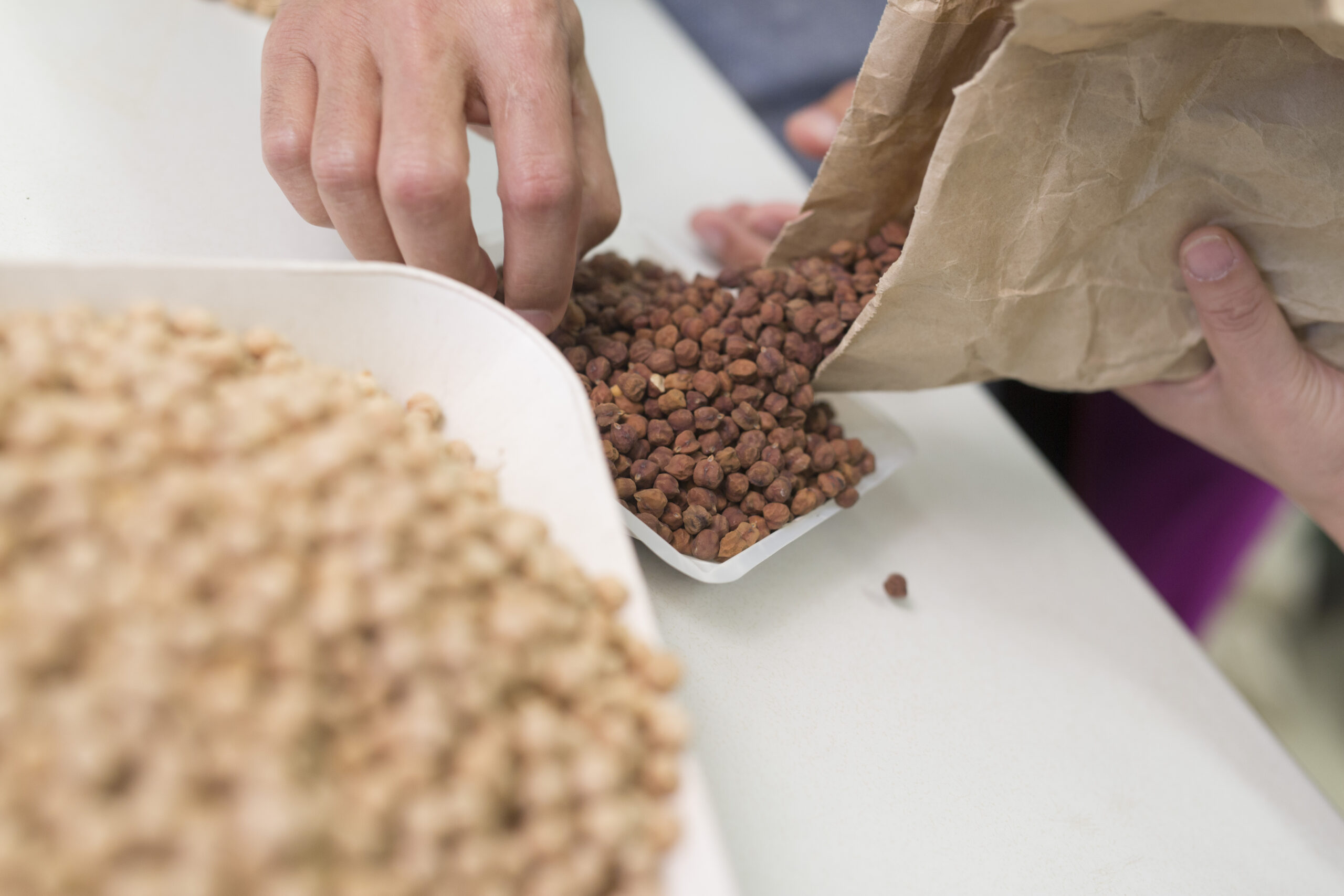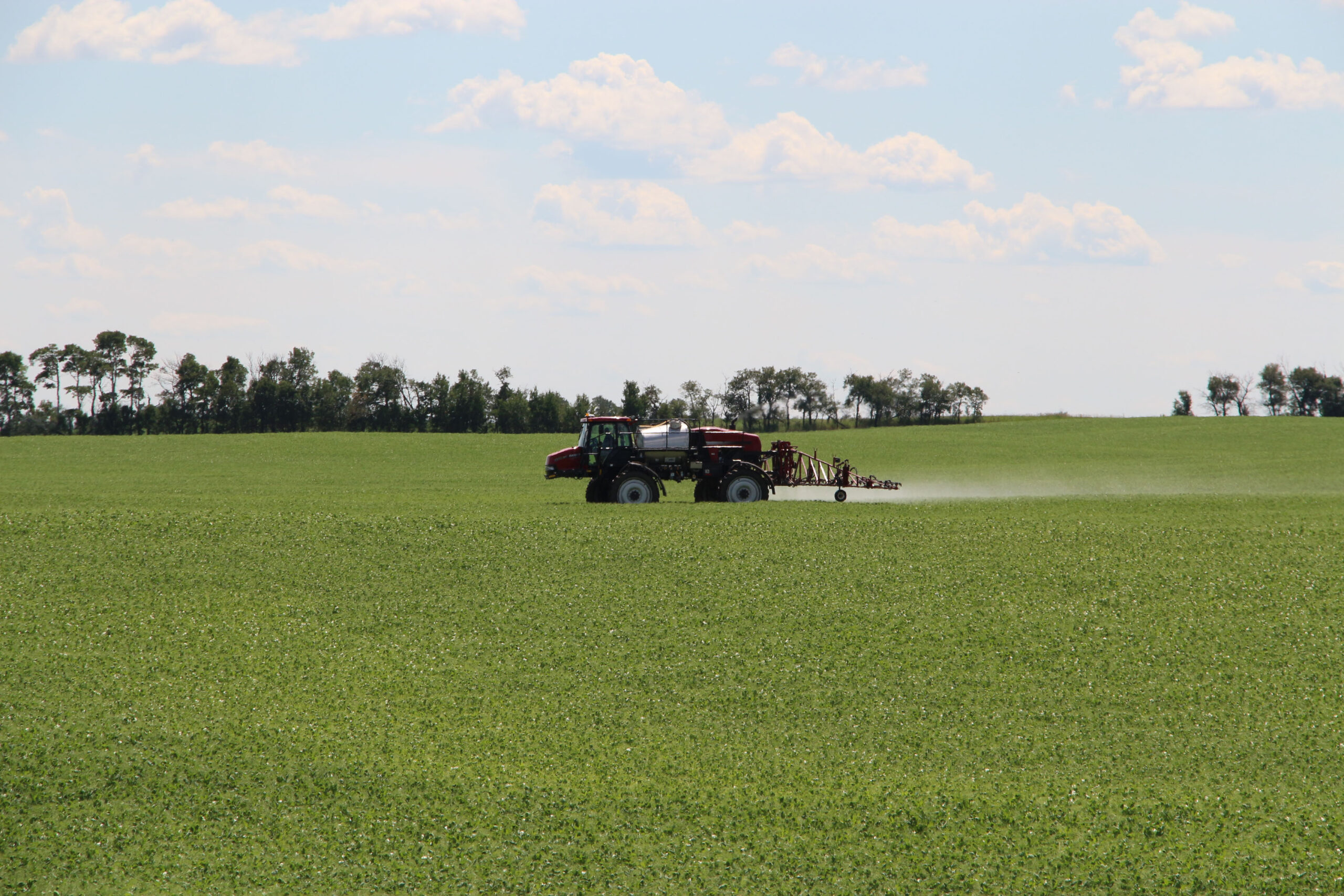Disease in lentils is a major concern as Anthracnose and Ascochyta blight can reduce both yield and seed quality. To help producers determine the need for fungicide control, a disease decision support checklist was developed by Lone Buchwaldt, Godfrey Chongo, and Bruce Gossen, with Agriculture and Agri-Food Canada.
Inspect the lentil crop between the 10 node stage and early flowering in at least 10 sites of the field, to determine the presence of leaf lesions and premature leaf drop. A risk value is then calculated as A+B+C+D.
- If the risk value is less than 50, a fungicide application is not recommended, but a new assessment should be made at three-to- five day intervals until the crop is no longer flowering.
- When the risk value is 50 or above, a fungicide application is recommended.
Fungicide Decision Support Checklist for Lentils
| A. Plant Stand | Risk Factor |
| Thin (high weed pressure, low yield expectations) | 0 |
| Moderate (some weeds, possibly low yield) | 5 |
| Normal (about 12 lentil plants/ft2 or 126/m2) | 10 |
| Dense (more plants than normal, lush growth) | 15 |
| B. Number of days with rain in the last 14 days | Risk Factor |
| 0 days | 0 |
| 1-2 days | 5 |
| 3-4 days | 10 |
| 5-6 days | 15 |
| 7 or more days | 20 |
| C. Five-day weather forecast | Risk Factor |
| Dry | 0 |
| Unpredictable | 10 |
| Light showers | 15 |
| Rain | 20 |
| D. Symptoms on lentil plants | Risk Factor |
| No visible symptoms | 0 |
| Few lesions on the lower half of the foliage (up to 10 per cent infected) | 5 |
| Lesions on lower half of the foliage (up to 25 per cent infected) | 15 |
| Lesions on lower (up to 25 per cent) as well as upper foliage (up to 10 per cent) | 25 |
| Lesions on lower foliage and premature leaf drop characteristics of Anthracnose | 25 |
| Flowers and/or peduncles infected, characteristics of Ascochyta blight | 25 |
| Lesions at the stem base | 30 |
| TOTAL SCORE OF RISK FACTORS (A+B+C+D): |
Ascochyta Blight
Ascochyta blight is seed-borne or residue-borne, resulting in infection of leaves, stems, pods, and seed. Lesions appear as tan or grey spots, and often have tiny black fruiting bodies (pycnidia), often arranged in circles, in the centre (Figure 1).
Cool, rainy weather is conducive for infection and spread of the disease. It is most damaging to maturing pods and seeds if prolonged wet weather occurs during July and August. Severely infected seed lots may not be marketable or will be downgraded severely due to discoloration.
Most lentil varieties now have some level of resistance to Ascochyta blight. Control of Ascochyta blight can be achieved from early-to-late flowering when symptoms appear. An application at early pod set may prevent reduction of seed grade.
Anthracnose
Anthracnose is a foliar and stem disease caused by Colletotrichum lentis. Research has identified two races of Anthracnose. A few lentil varieties are available with intermediate to moderate resistance to Race 1, but no varieties are resistant to Race 0.
Infection results in cream coloured lesions on leaves and sunken lesions on stems that are often tan coloured with a dark margin (Figure 2). Lower leaflets wilt and drop to the soil surface. The lower stem turns brown and the plants eventually die prematurely resulting in patches of dead plants in the field.
Lesions may contain tiny black resting bodies (microsclerotia) somewhat similar in appearance to Ascochyta blight fruiting bodies, but smaller and darker in colour, more numerous, and irregular in shape. Patches of dying plants appear within an otherwise green field and can spread rapidly. The disease is favoured by warm, moist weather and commonly kills the infected lentil plant before seed is produced.
The optimal time for control of Anthracnose is from the 10 to 12 node stage to early flowering when premature leaf drop first occurs. An application of fungicide may be warranted at low levels of stem infection to protect those plants that are still healthy. It is too late to control Anthracnose when severe lesions can be found at the stem base, and when the crop is no longer flowering.

Source: Saskatchewan Ministry of Agriculture

Source: Saskatchewan Ministry of Agriculture



